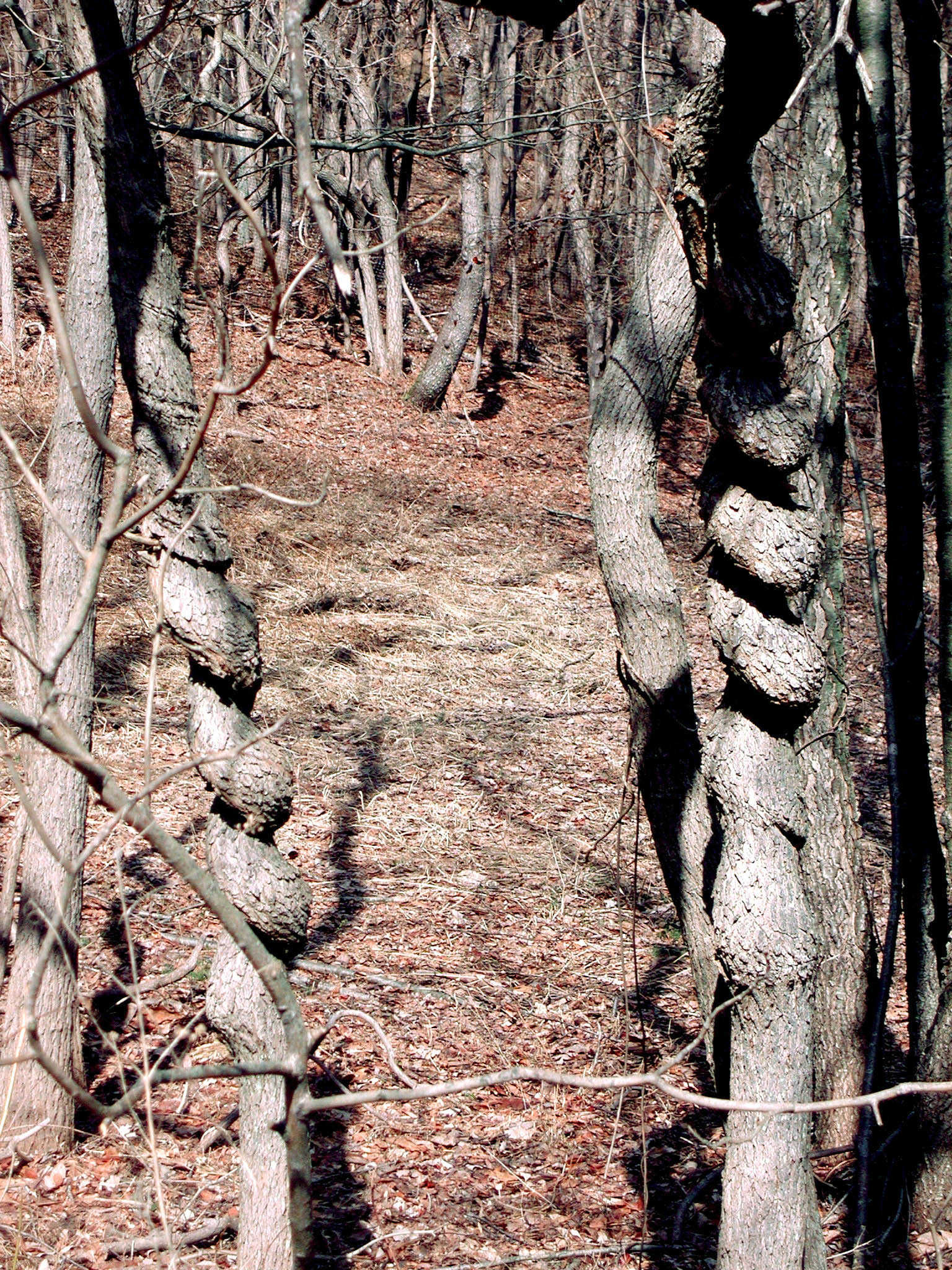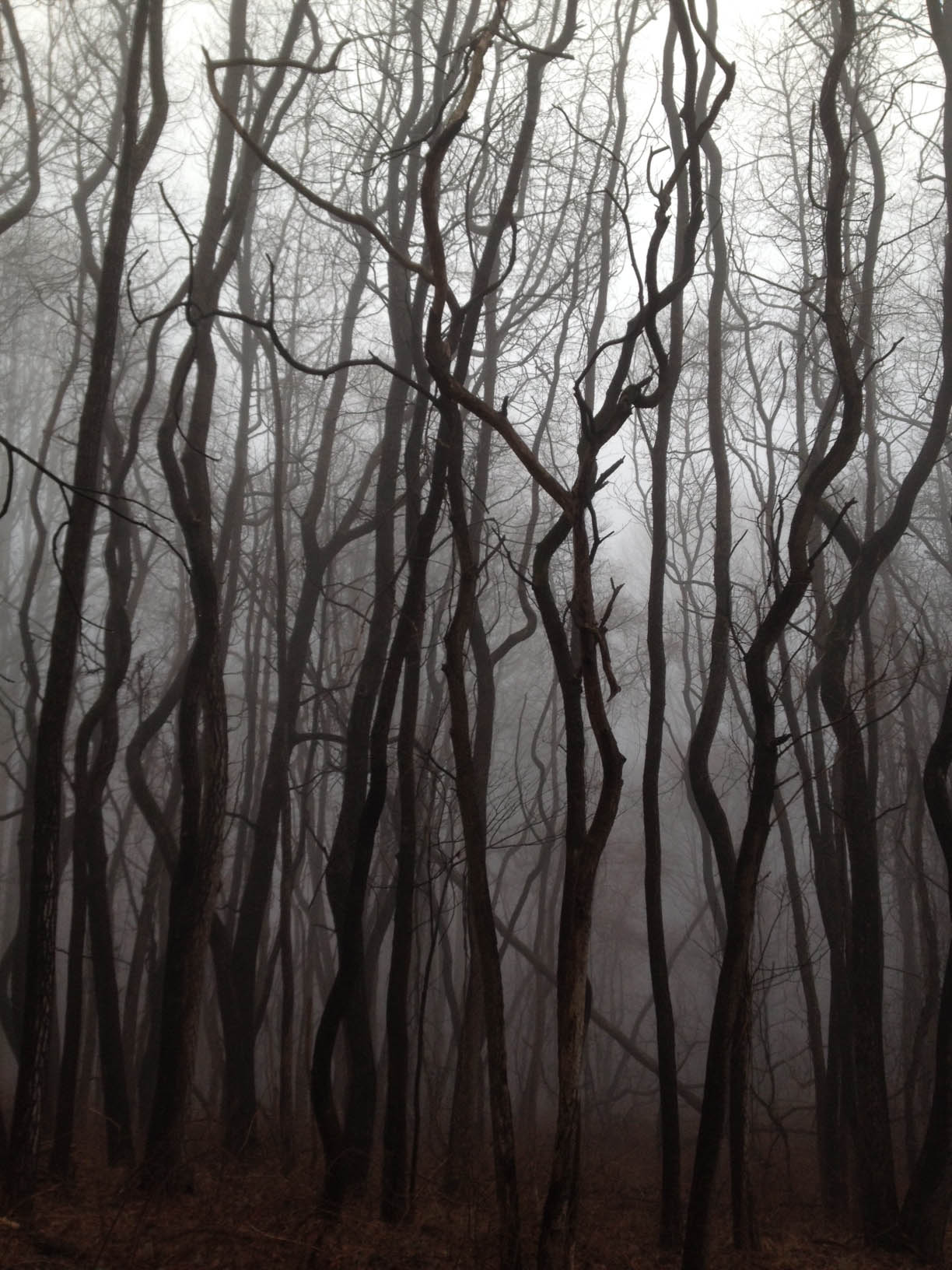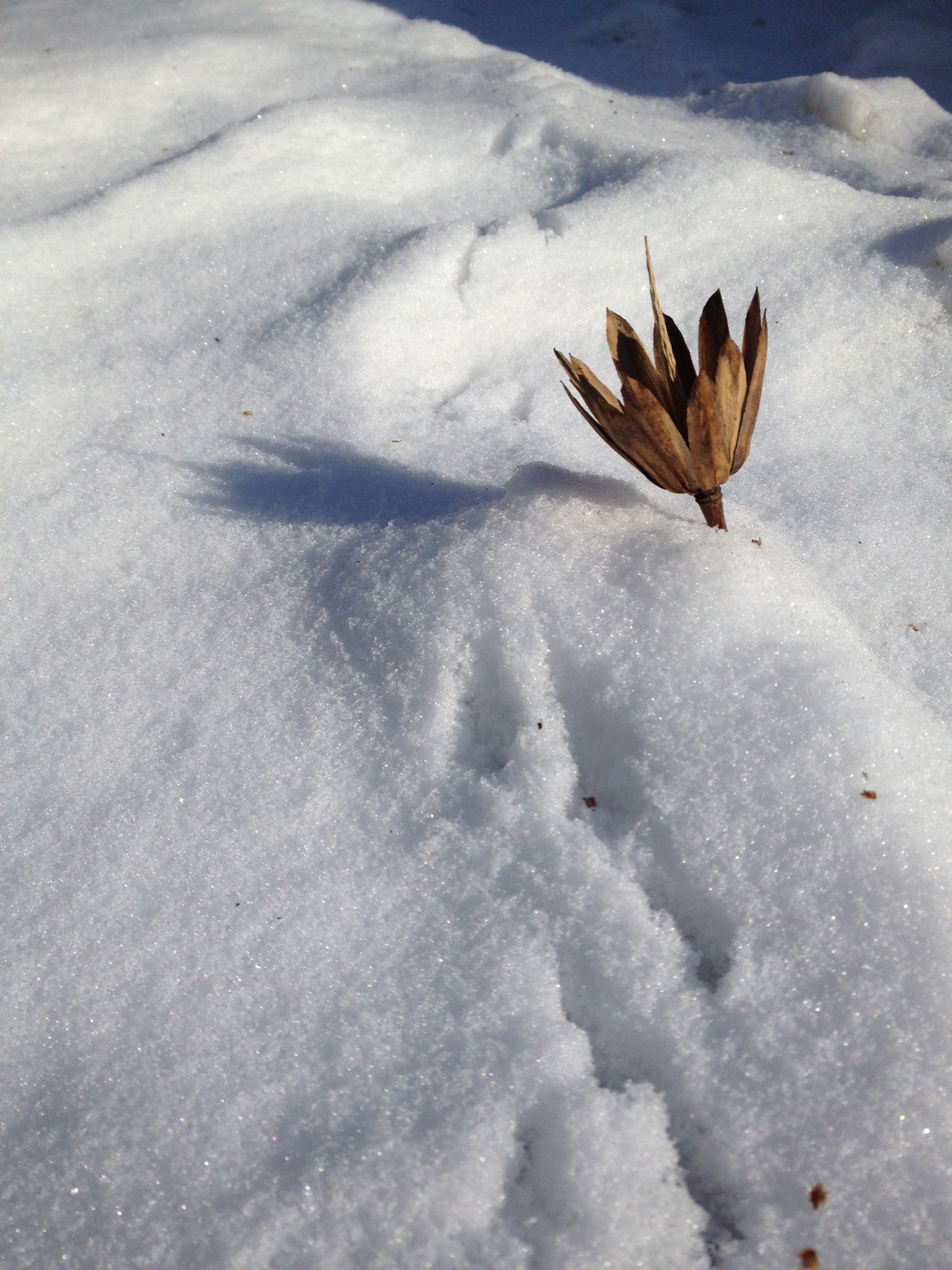 January 15, 2014
January 15, 2014By Melissa Nase, Manager of Land Stewardship

Winter provides a simplified, yet inspiring version of the forest we know so well in other seasons. I welcome its cool, calm colors after many weeks of the unrelenting holiday glitz and chaotic pace. In many ways, it is so much easier to proverbially, “see the forest for the trees” in this season. Uncovering the beauty and details of this place during winter is magical. Especially after a snow, the silence paired with the subdued greys and whites removes the sensory overload that can distract in other seasons. Texture, pattern, and form come alive and draw us into the intricacy of our forest.
To me, winter presents a perfect time for observation and curiosity: Many of our wildlife friends have retired or relocated for the season, although evidence suggests that a few remain nearby. I am delighted by spotting tracks on new snow, pondering where they were headed and who they met along the way. Winter birds flitter from one shrub to another to gossip and look for their next meal.
 The complex bark patterns and stoic silhouettes of leafless trees stand out against the muted background. Crooked, twisting, and bending lines of Sassafras trees (Sassafras albidum) create a mysterious landscape, as if they were pulled from the Wizard of Oz forest. Beech and oak trees (Fagus grandifolia, Quercus spp.) are easily identified too as they are the ones still holding on to their persistent leaves. Branches creak and groan and scrape against each other in the wind – sometimes at a startling volume. Oriental Bittersweet (Celastrus orbiculatus) slyly vines its way around trees, displaying its showy red berries while quietly choking and adding unwelcome weight to its host. Brown, dead remains of Mile-a-Minute (Persicaria perfoliata) covering shrubs in open fields remind me of our future springtime battles. One of the few plants providing green color through the winter, the distinctive American Holly (Ilex opaca), seems to be thriving in our forest, as I spot many new seedlings and young trees along the trails.
The complex bark patterns and stoic silhouettes of leafless trees stand out against the muted background. Crooked, twisting, and bending lines of Sassafras trees (Sassafras albidum) create a mysterious landscape, as if they were pulled from the Wizard of Oz forest. Beech and oak trees (Fagus grandifolia, Quercus spp.) are easily identified too as they are the ones still holding on to their persistent leaves. Branches creak and groan and scrape against each other in the wind – sometimes at a startling volume. Oriental Bittersweet (Celastrus orbiculatus) slyly vines its way around trees, displaying its showy red berries while quietly choking and adding unwelcome weight to its host. Brown, dead remains of Mile-a-Minute (Persicaria perfoliata) covering shrubs in open fields remind me of our future springtime battles. One of the few plants providing green color through the winter, the distinctive American Holly (Ilex opaca), seems to be thriving in our forest, as I spot many new seedlings and young trees along the trails.
 The last of the Tulip Poplar (Liriodendron tulipifera) fruit, a cone or cup-shaped collection of samaras, are a delicate discovery resting on the snow. As we welcome the New Year, consider donning a few more layers and exploring the underappreciated winter landscape. I guarantee moments of peacefulness and wonder.
The last of the Tulip Poplar (Liriodendron tulipifera) fruit, a cone or cup-shaped collection of samaras, are a delicate discovery resting on the snow. As we welcome the New Year, consider donning a few more layers and exploring the underappreciated winter landscape. I guarantee moments of peacefulness and wonder.

Beautifully written and such a soothing explanation of the months of winter. I don’t think I will ever look at the brooks,trees and holly around my home without thinking of your descriptions. And winter does seem to calm the manic soul after all the holidays.
Kay, Thank you for your lovely note. I’m so glad the Schuylkill Center holds such a special place for you. Glad you enjoyed Melissa’s beautiful notes about this time of year.
Thanks to the author’s proud Mom for sharing this delightfully written piece with me, the author’s high school English teacher 🙂 She certainly captured the beauty of a season taken for granted by many through well chosen descriptions. I look forward to reading more thoughts and writings by the author!